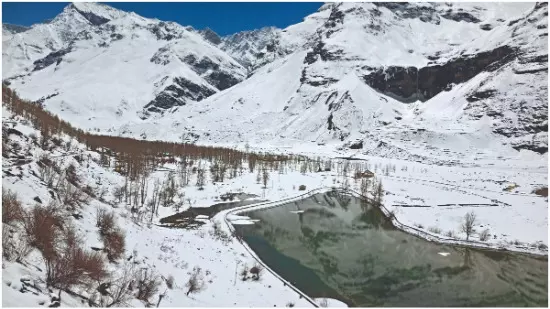Himachal Pradesh’s Spiti Valley recognised as UNESCO World Network of Biosphere Reserves

Shimla: Popular for its uniqueness, heritage, ancient Buddhist landmarks, and fascinating mountains, the Spiti Valley in Himachal Pradesh has been recognised as India’s first Cold Desert Biosphere Reserve under UNESCO’s prestigious Man and the Biosphere (MAB) program.
The recognition was formally conferred during the 37th International Coordinating Council (MAB-ICC) meeting held in Hangzhou, China, from September 26 to 28, 2025. With this inclusion, India now has 13 Biosphere Reserves in the MAB Network.
An official release of the government said: “This milestone has been made possible due to the pragmatic efforts of the state government under the leadership of Chief Minister Sukhvinder Singh Sukhu.”
He has consistently highlighted the region’s unique ecology, climate, culture, and heritage, as well as the commitment of local communities who have lived in harmony with nature for generations.
Congratulating the Forest Department and its Wildlife Wing, the Chief Minister said: “The state government is committed to protecting and conserving Himachal Pradesh’s rich natural and cultural heritage and fragile ecology in the era of climate change, while ensuring harmony between developmental activities and nature.”
The Spiti Cold Desert Biosphere Reserve spans a geographical area of 7,770 sq. km, covering the entire Spiti Wildlife Division (7,591 sq. km) and adjoining parts of the Lahaul Forest Division, including Baralacha Pass, Bharatpur, and Sarchu (179 sq. km).
Located at altitudes ranging from 3,300 to 6,600 meters, the Reserve falls within the Trans-Himalaya biogeographic province of the Indian Himalaya.
The biosphere reserve is structured into three zones: a 2,665 sq. km core zone, a 3,977 sq. km buffer zone, and a 1,128 sq. km transition zone. It integrates Pin Valley National Park, Kibber Wildlife Sanctuary, Chandratal Wetland, and the Sarchu Plains, representing a unique cold desert ecosystem shaped by extreme climate, topography, and fragile soils.
The region is ecologically rich, harbouring 655 herbs, 41 shrubs, and 17 tree species, including 14 endemic and 47 medicinal plants central to the Sowa Rigpa/Amchi healing tradition. Its wildlife includes 17 mammal species and 119 bird species, with the snow leopard as a flagship species.
Other notable species include the Tibetan wolf, red fox, ibex, blue sheep, Himalayan snowcock, golden eagle, and bearded vulture. With more than 800 blue sheep, Spiti Valley alone provides a strong prey base for large carnivores.
Amitabh Gautam, PCCF (Wildlife) said: “The recognition firmly places Himachal’s cold deserts on the global conservation map. It will enhance international research collaboration, promote responsible ecotourism to support local livelihoods, and strengthen India’s efforts to build climate resilience in the fragile Himalayan ecosystems.”
Spiti is part of the Lahaul-Spiti district and shares its border with China.
Some of the highly popular sites are Tabo Monastery, which is Key Monastery—the largest and oldest monastery in Spiti, perched dramatically on a hilltop, Kibber Village, which is one of the highest motorable villages and the gateway to Kibber Wildlife Sanctuary (snow leopards); and more.
The enchanting “Moon Lake” at 4,300 m— Chandratal Lake, famous for trekking and camping, and the 1000-plus-year-old Tabo Monastery, often called the “Ajanta of the Himalayas”.



